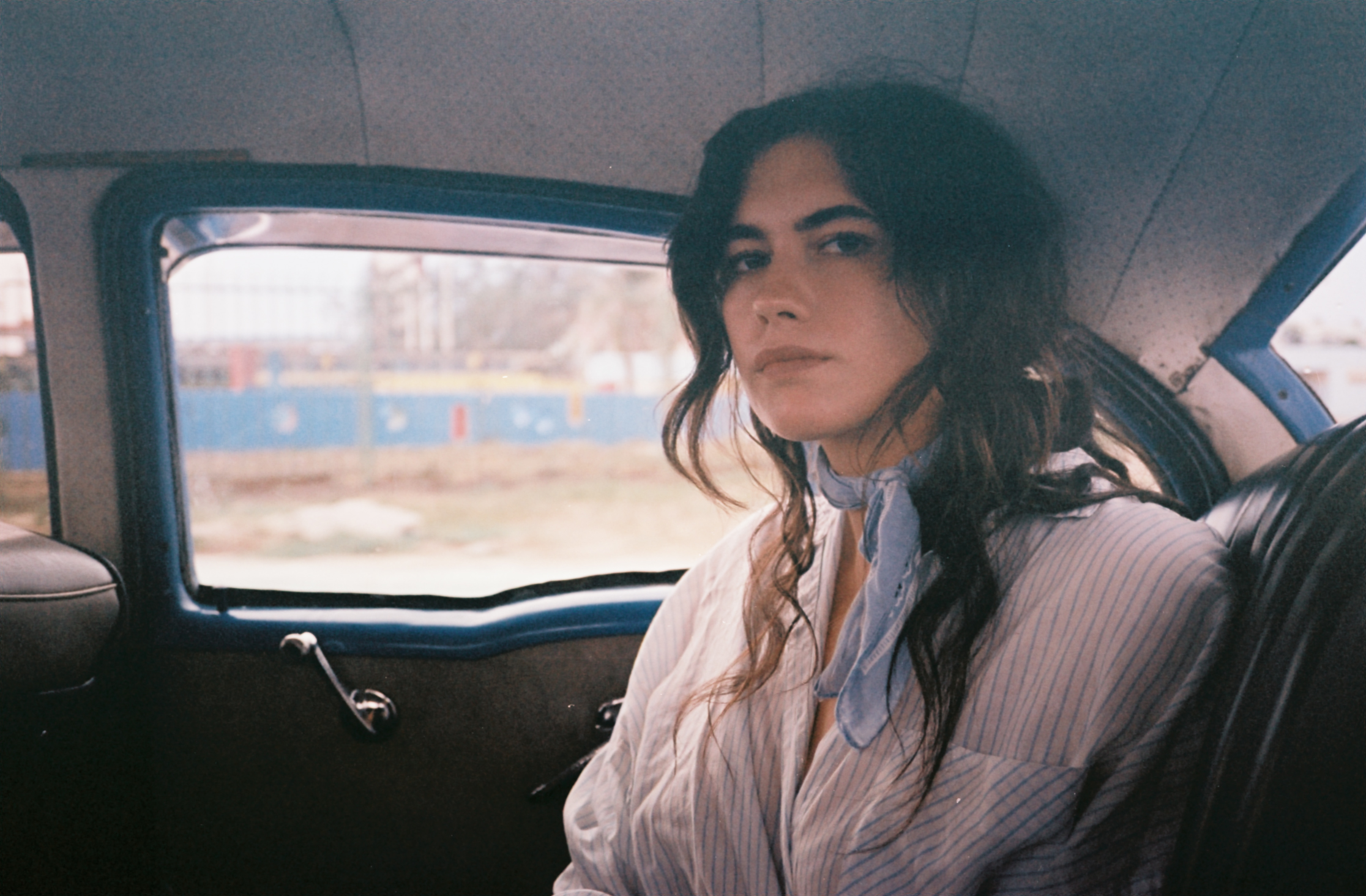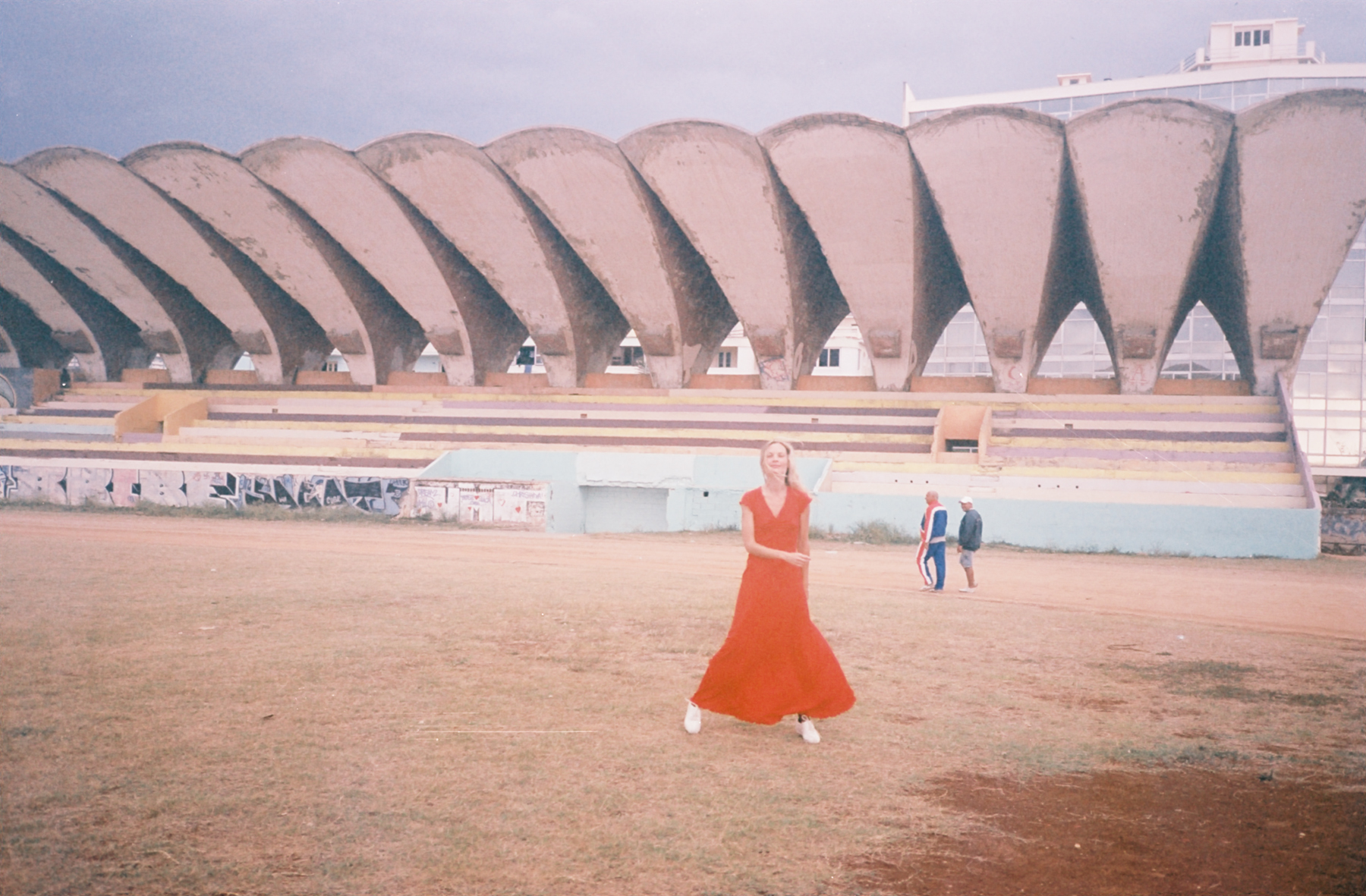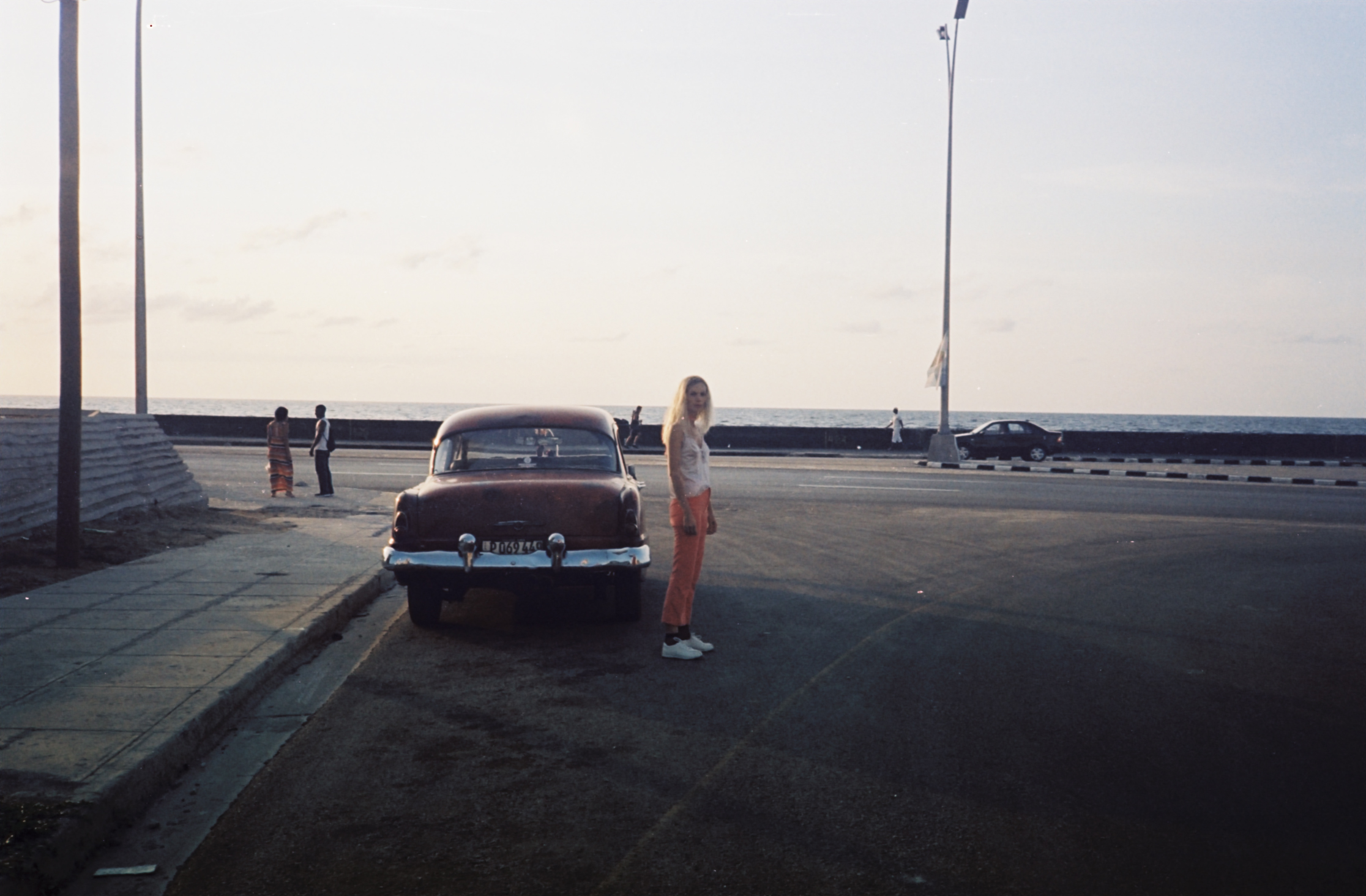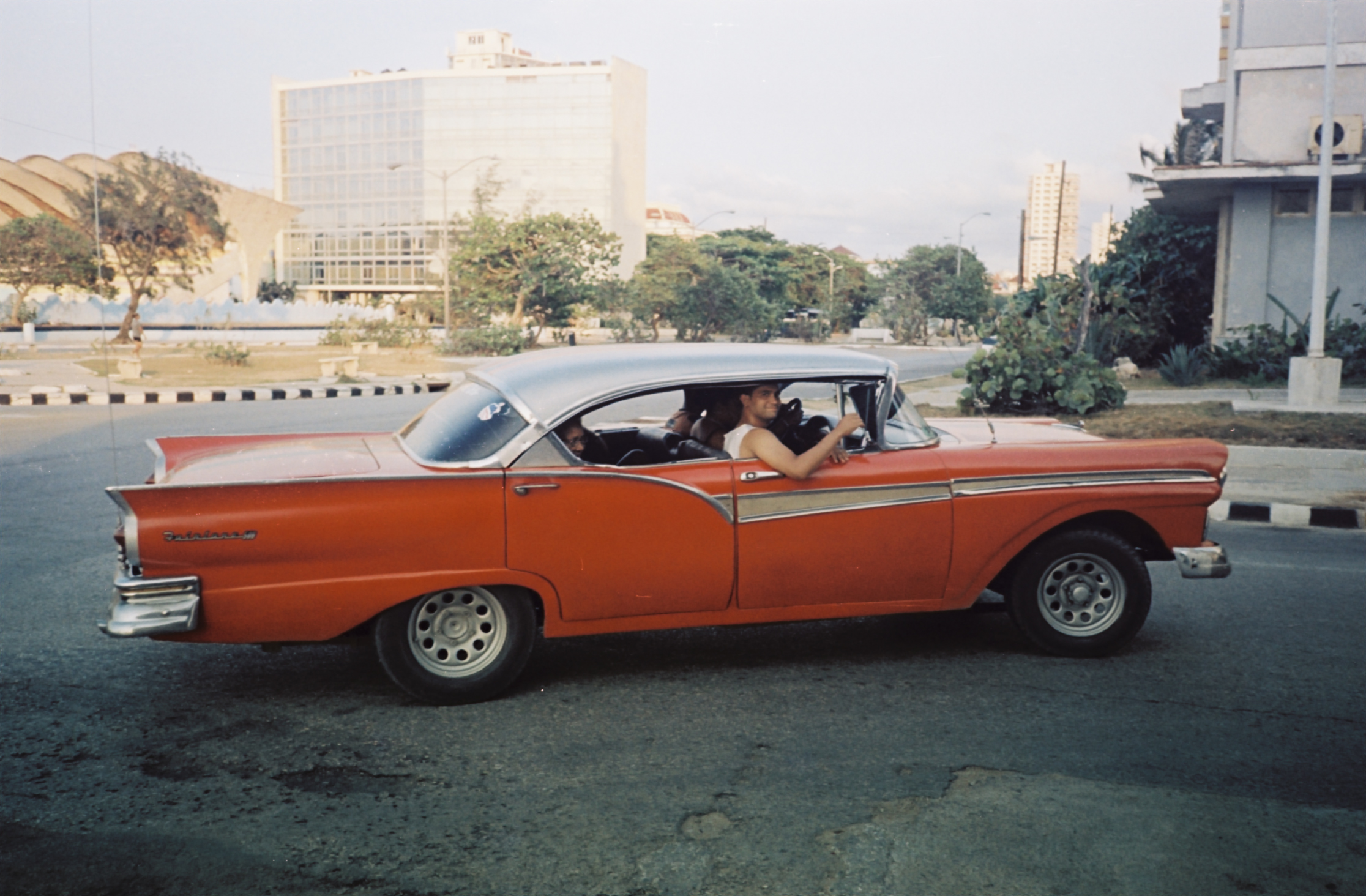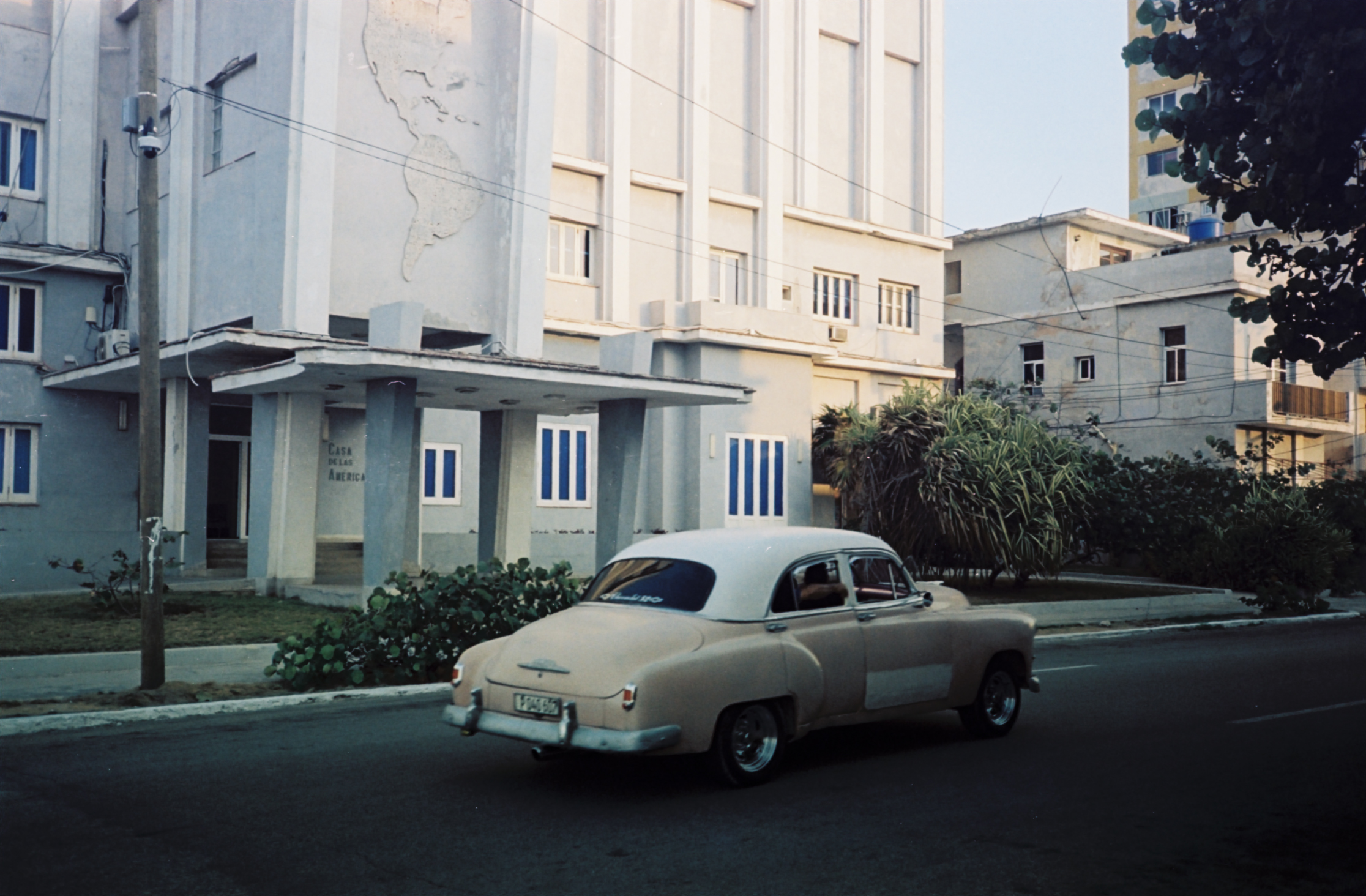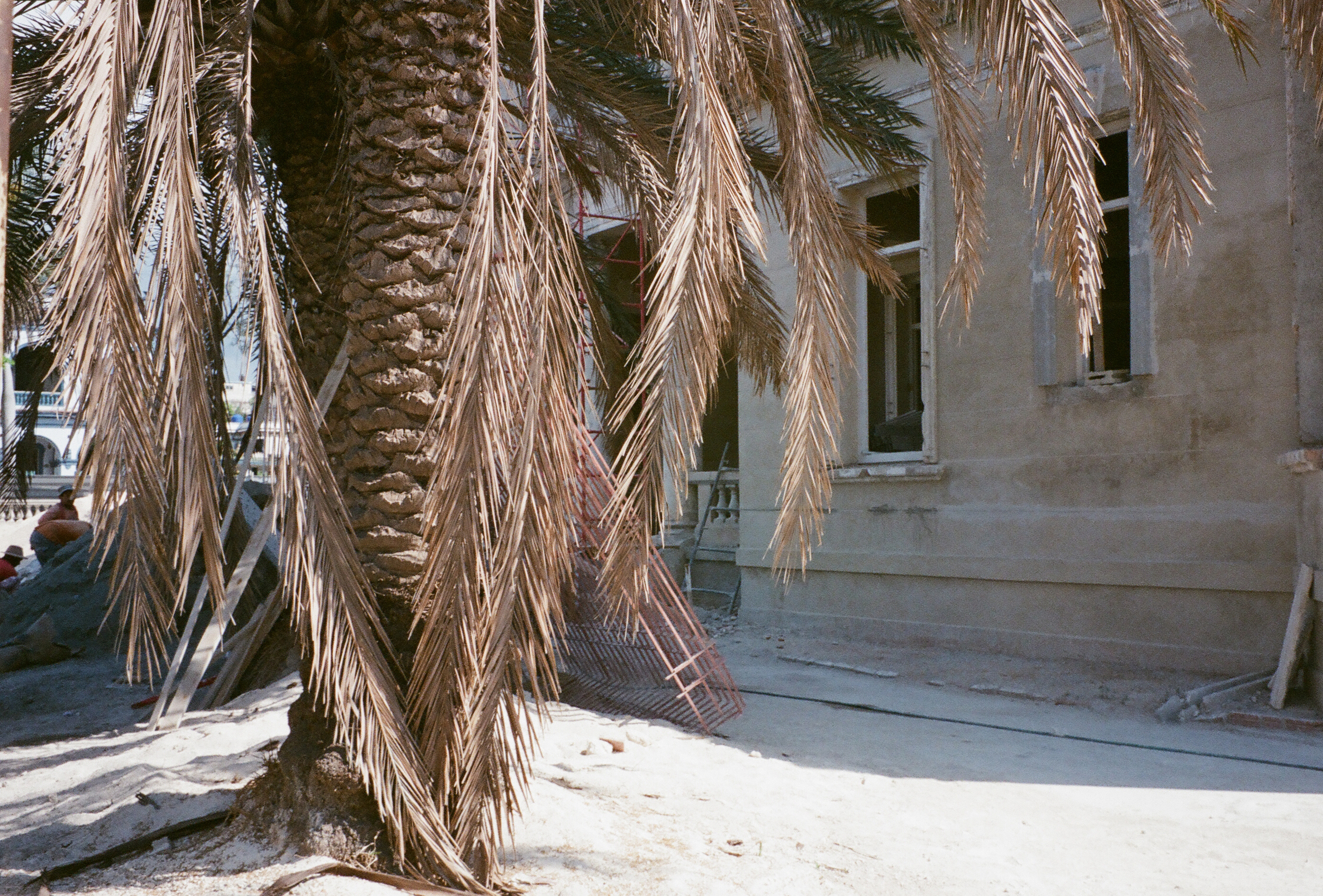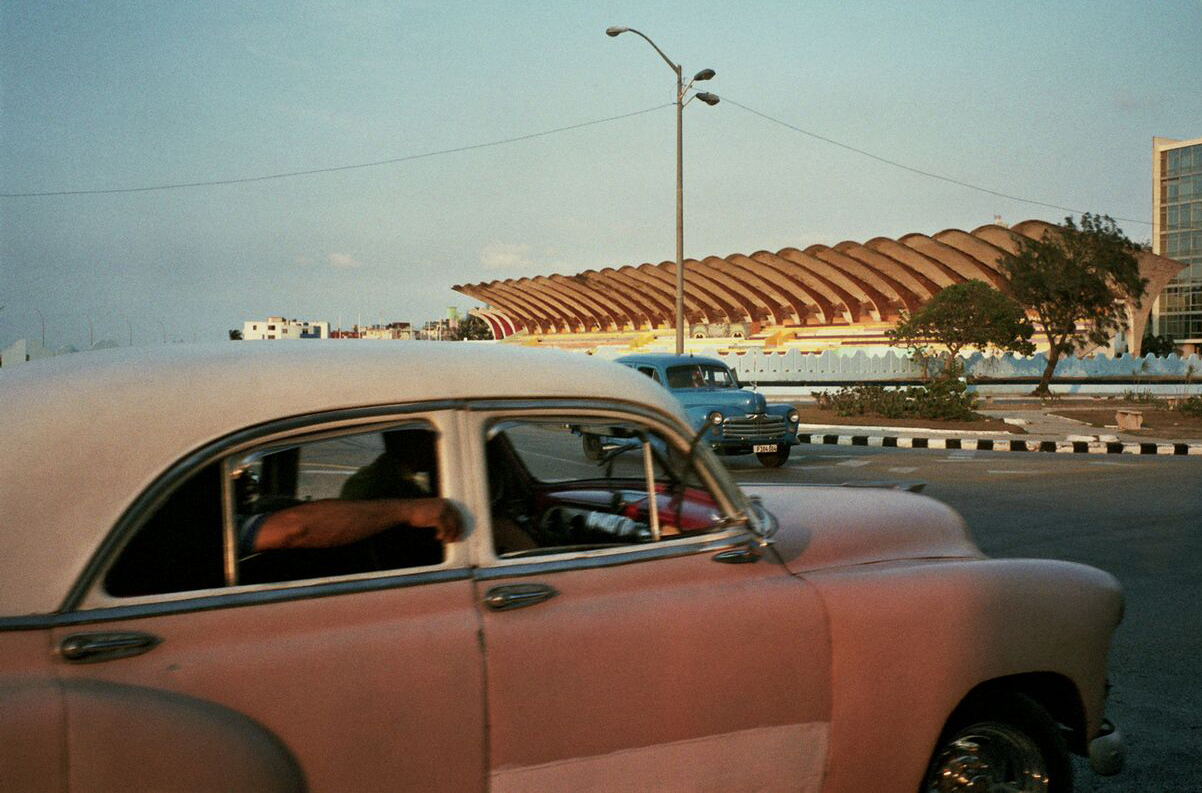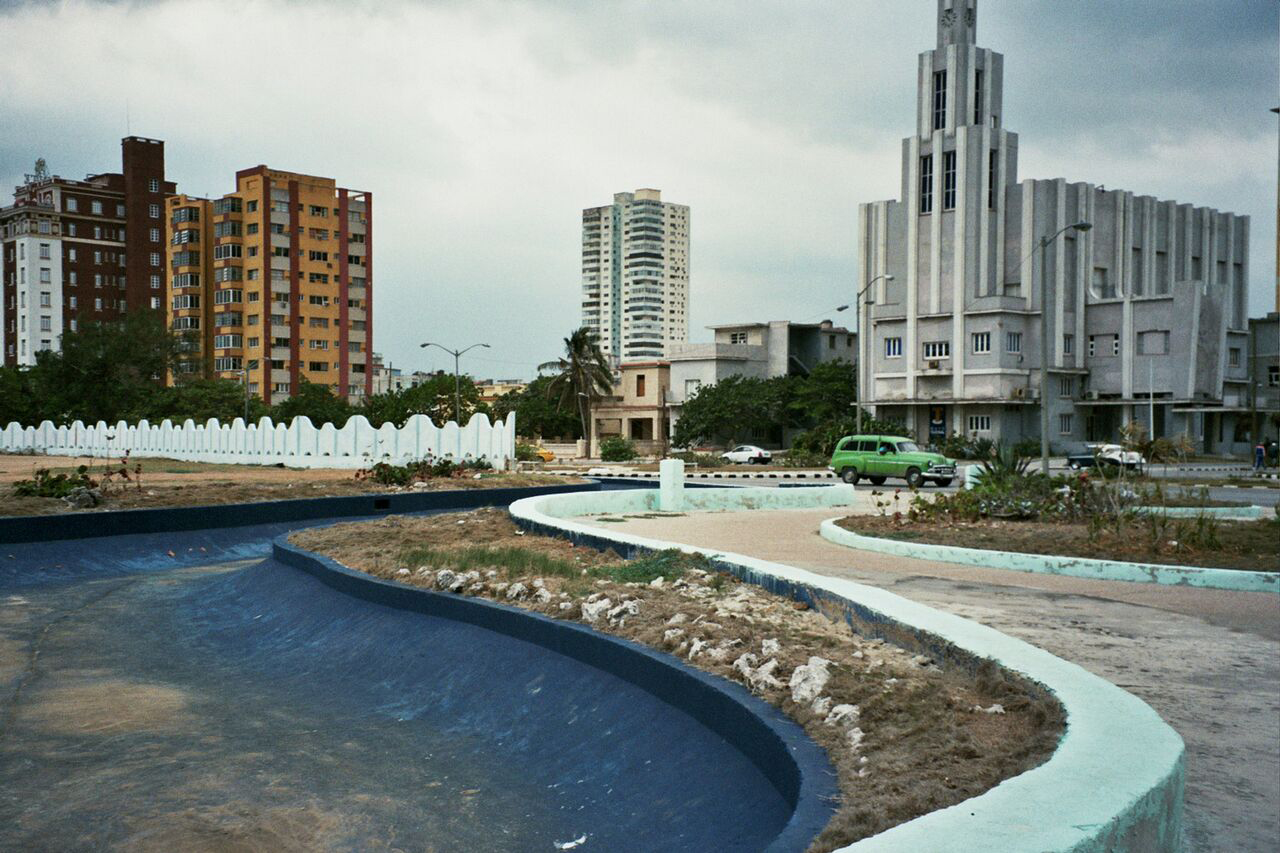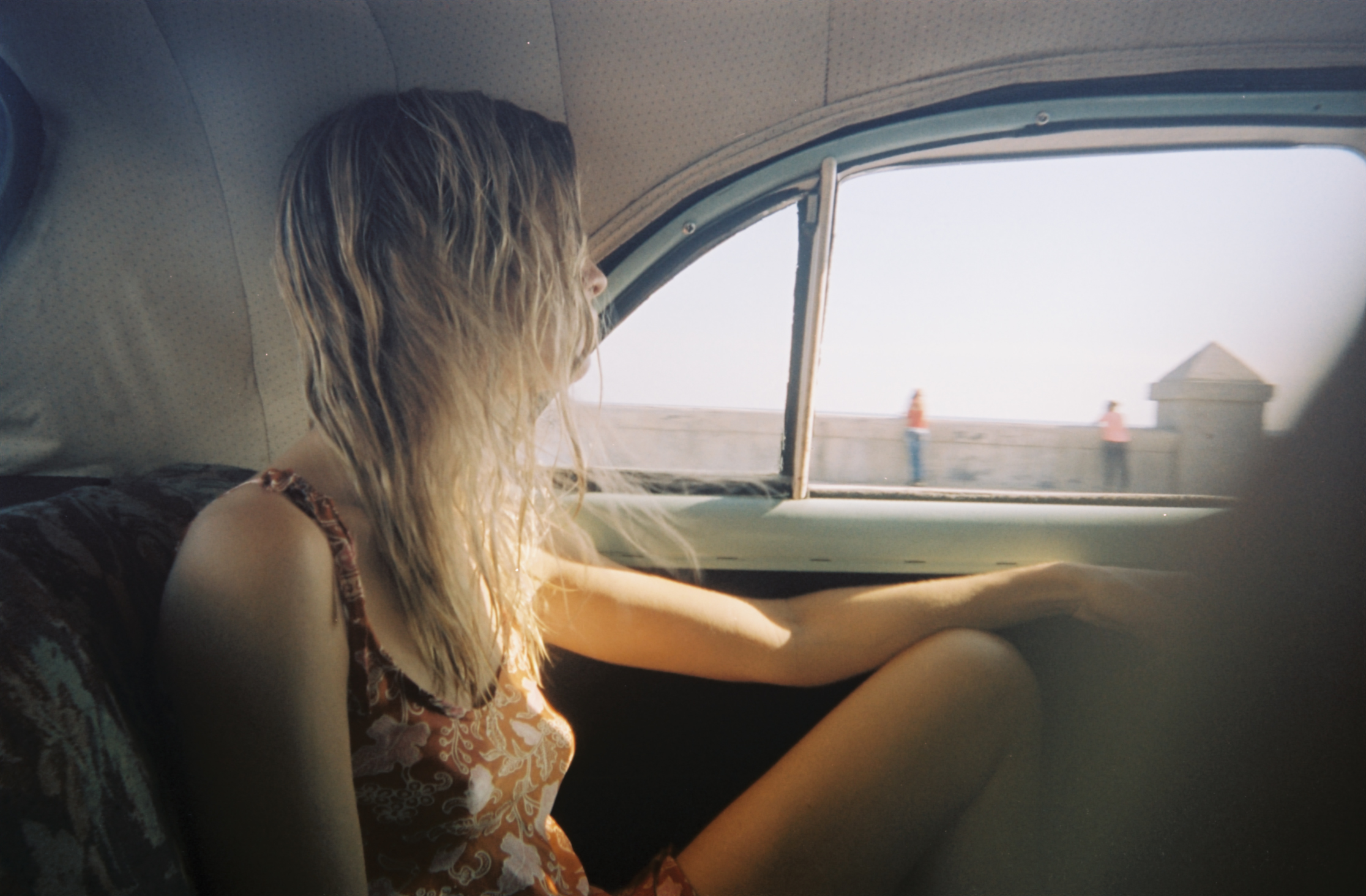El Vedado is a unique place. Sitting outside of the Old City, El Vedado has it’s own identity that architecturally resembles almost nothing of Old Havana. El Vedado features some of the best examples of early and mid-twentieth century architecture and urban planning in Cuba. The influx of Spanish immigrants in the early twentieth century brought with them art nouveau, along with neoclassical buildings, Art Deco styles, as well as works of the Modern movement. The neighborhood was initially developed in the second half of the nineteenth century, but became the heart of modern Havana in the 60’s. One of my favorite structures was the Vedado Sports arena built in 1956, located along the Malecon waterfront boulevard. Big arches, minimal lines and the bright colors of the arena’s steps make it stand out among the rest of the structures along the Malecon. If you travel through Vedado, take some time to see it. Lucky enough, we had a flat only a few blocks from the arena, and one block from the sea. The Malecon is a destination spot on it’s own, it's a seawall that stretches about 5 miles down Havana. The Malecón is popular among Habaneros, lovers and fishermen and becomes a nighttime promenade for the poor. It serves itself as my favorite bar and dance hall in Cuba. Locals gather in the evenings to watch the sunset, drink rum from a bottle and play their favorite Cuban melodies. photographs by Mattea Perrotta and Kate Parfet. Text by Mattea Perrotta

